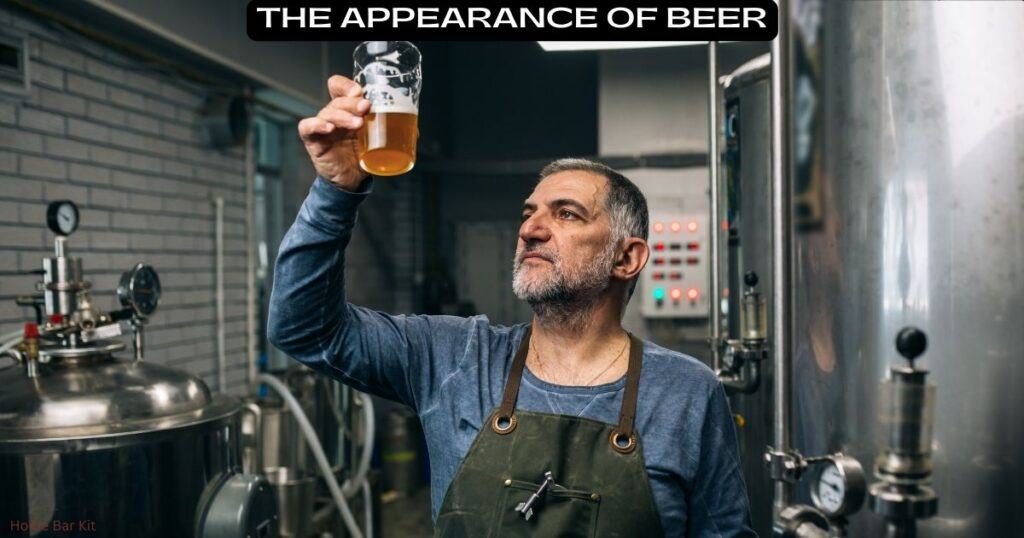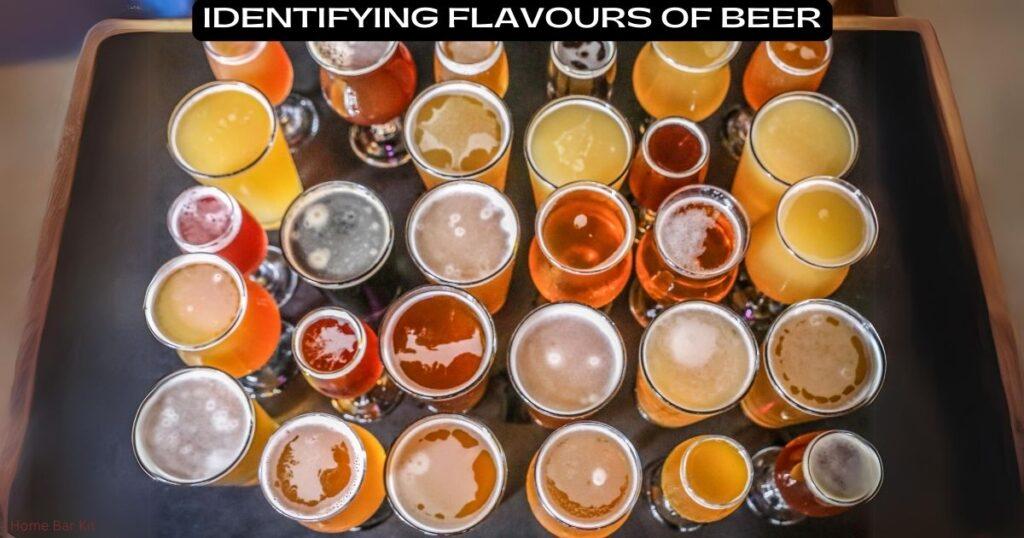I love beer, from light lagers through pale ales, IPA’s and deep rich stouts, they all have their own charm. It’s all about immersion, a little understanding, and a bit of skill. So training your palate for beer tasting is not just an indulgence, it’s an activity that heightens enjoyment and appreciation for one of the world’s oldest beverages.
Training the palate for beer tasting is not complicated. In short it is a simple process of the appearance of the beer, followed by the the aroma and then the taste. Hold the glass up and check the colour of the beer, its head consistency and the clarity. Gently swirl the glass to release aromas, and take a couple of short sniffs, then take a longer sniff to really take in the beers aroma. Finally take a sip and let the beer linger in the mouth, focus on the balance between sweet malts and hoppy bitterness, and any other flavours coming through. Then consider the aftertaste.
Table Of Contents
The complexity in beer arises from its ingredients and brewing process, delivering a range of aromas and flavours that are waiting to be explored.
Whether you’re curious about craft beer or aiming to sharpen your sensory skills, understanding these subtleties can significantly enhance your beer drinking experience.
Refining the palate can unlock a world that goes beyond just having a pint of beer. You may pick out notes of caramel in a full bodied ale or the floral hints in a delicate lager.
For brewers, chefs, and competitive tasters, a well-trained palate is essential. However we can all develop our palates, not just to enjoy beer more, but other drinks and food too.
Developing a a more refined palate takes a little time and practice. But the results are worth it and the beer experience will hit a new level.
Mastering the Beer Tasting Method
A refined palate is all about focusing on the appearance, aroma and taste of the food or drink we are consuming.
When you learn the method of tasting beer, you’re not just drinking; you’re elevating your beer experience. The steps are simple, so anyone can develop their palate. However it can take a little time and practice, but that is all part of the experience.
Beer Glass
First, think about the glassware. Different styles of glasses are suited to different types of beer. You can get beer glasses specifically for tasting. Although personal choice does play a part in glass selection.
A proper glass will showcase the beer’s aroma, carbonation, and colour. The key elements that affect your perception before the first sip.
It is important that whatever glass you choose, it is clean. Residue left from cleaning detergents can affect the beers head and sometimes taste.
The Appearance of Beer

Next, observe the beer’s appearance. Hold the glass up to a light source and note the colour, head consistency, and clarity. Is it hazy or clear?
What is the size and behaviour of any bubbles and is there any signs of sediment? Any sediment could point out an unfiltered beer, which some say has more aroma and flavour.
A visual inspection of the beer sets the stage for what’s to come.
Beer Aroma
What follows is the aroma. Swirl the glass gently to help release the aromas from the beer. Bring the glass close and take a couple of short sniffs, see what aromas arise from the glass.
Then take a longer deeper inhale. Are there citrus notes, hints of malt, or a hoppy punch?
Aromas are sometimes hard to identify, but with practice it becomes easier to pick out those sweet malts, or tropical citrus fruits you might find in a pale ale or IPA.
The temperature of a beer can have an affect on the beer aroma. Too cold and it will deaden the smell, so think about temperature when beer tasting.
If I can’t get much aroma from a beer, I will cover the glass with one hand and swirl it with the other. Then go straight in for a sniff as I lift my hand off the glass.
This does help to contain any aromas in the glass until you move your hand. It has helped me several times when the aroma of a beer has been faint.
Beer Tasting
Obviously the tasting is the best part. Take a small sip and let it linger on your tongue, move it around a little or chew it if you like.
Inhale through your mouth to oxygenate the beer and release more flavours. Consider the balance between sweet malts and bitter hops, the body of the beer, and its aftertaste.
How does it feel in the mouth? Is it fizzy and carbonated or smooth and creamy? Focus on the flavours in the mouth to pick up any fruits or spice.
Once you have swallowed the beer focus on the aftertaste like sweetness or bitterness, or perhaps a dryness.
Record Your Beer Tasting
Finally, a good way to improve your palate over times is to write down your thoughts. Noting your observations can help you remember the flavours and sensations.
This record serves as a reference point for comparing future beer tastings and tracking the development of your palate.
Understanding this process leads into the next important phase: identifying the many aromas and flavours that beer tasting reveal.
Identifying Flavours: A Palate’s Journey

Developing a palate for beer goes beyond simply recognizing whether a brew tastes good or not. It’s about identifying the many flavours that each beer presents.
Refining your palate will dramatically enhance your tasting experience.
Beers can exhibit a wide array of flavours influenced by their ingredients and brewing processes. Here’s what you’re likely to encounter: sweet notes from malt, bitterness from hops, fruity or spicy undertones from yeast, and occasional sourness from fermentation techniques.
Start by familiarizing yourself with the basic taste profiles: sweet, sour, salty, bitter, and umami.
Sweetness is often conveyed by malted barley, bringing caramel or chocolate notes to the beer. Hops introduce bitterness which balances the malt’s sweetness and can leave floral or grassy notes.
Saltiness is rare but can be found in some styles like Gose. Sour flavours come from specific bacteria or wild yeast and might remind you of green apples or cherries.
Umami, the savoury profile, is subtle in beer but can be comparable to the richness found in cooked mushrooms or ripe tomatoes.
To practice, begin with common beer styles, such as pilsners for crisp bitterness, stouts for rich malts, and Belgian ales for a balance of fruit and spice.
Note the flavours and sensations with each sip, and write them down if that helps you remember.
If you are tasting more than one beer, then the right palate cleansing technique ensures each beer has a fair chance to perform. Selecting neutral foods like plain crackers and sipping water in between tastings can reset your taste buds.
This is important for maintaining a fresh slate so the subtle differences between diverse beer styles can shine through.
Refreshing the Palate: Techniques for Cleansing
A trained palate can discern an array of flavours in beer, but those can be lost if the palate isn’t cleansed properly between tastings. To maintain the integrity of each beer’s profile, here are a few techniques for cleansing your palate.
Clean Slate Between Beers
This isn’t just about rinsing your mouth; it’s about resetting your taste buds. Use plain water, preferably still, to rinse between beers. Carbonated water can affect the carbonation perception of the next beer taste.
Go For Neutral Flavours
When tasting multiple beers, keep to neutral-flavoured crackers or bread. These absorb lingering tastes and odours without introducing new ones, ensuring your next sip is untainted.
Although some do say that because bread contains yeast that it can influence the taste of the beer, which obviously contains yeast too.
I always find just a few sips of water is enough to cleanse the palate.
Rely On Aromatics
This is not something I have done myself, but smelling fresh coffee beans in between beers can ‘reset’ your sense of smell. A big part of perceiving taste is actually smell.
This trick can offer a clean slate for the next beer aroma, like I said not something I have tried, but it might work.
Pace Yourself
When there is more than one beer to taste, allow time between beers. Rushing through a tasting could confuse your palate and spoil the experience.
Enjoy the moment, giving your palate a break between rounds and you will get the most out of a beer tasting session.
Beer tasting is an experience meant to be savoured, and a fresh palate is the best way to enjoy every sip to its fullest. So, the next time you’re engaged in a beer tasting, remember: a clear palate ensures the best taste experience.
Every beer deserves the chance of the best first impression.
Final Thoughts
Training the palate for beer tasting is not a difficult thing, but it does take a little time and practice. Like anything the more you do it, the better you get.
Tasting beer properly is more important than it has ever been with the rise of craft beer. Breweries go to a lot of trouble to produce beers that are full of different aromas and flavours.
So it makes sense to develop our palates to enjoy all the aromas and flavours in beer. Plus it is fun too, and you get so much more out of drinking beer.
You don’t have to be a Cicerone to enjoy the process of tasting and enjoying beer.
Try some new beers that you have not had before, get into the craft beer scene and enjoy what is on offer, because there is so much beer out there.
If you have any question or thoughts about how to train the palate for beer tasting, then do share them below.
But most of all enjoy your beer tasting experiences.
Rob is a passionate home bar and pub shed enthusiast with a passion for craft beer. With hands-on experience in designing and building his own home bar, Rob shares his knowledge, tips, and inspiration to help fellow enthusiasts create their own perfect space. Alongside the world of home bars and pub sheds, Rob also explores the diverse and exciting realm of craft beer, providing honest reviews to help you discover your next favorite brew. Join Rob on a journey of flavor, design, and craftsmanship right here on Home Bar Kit.

